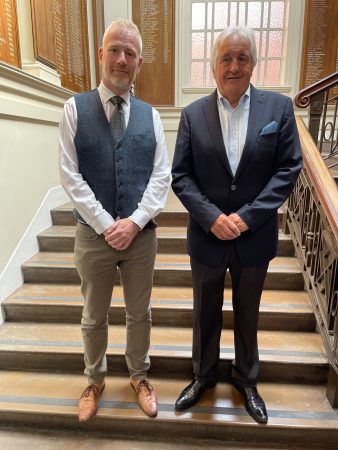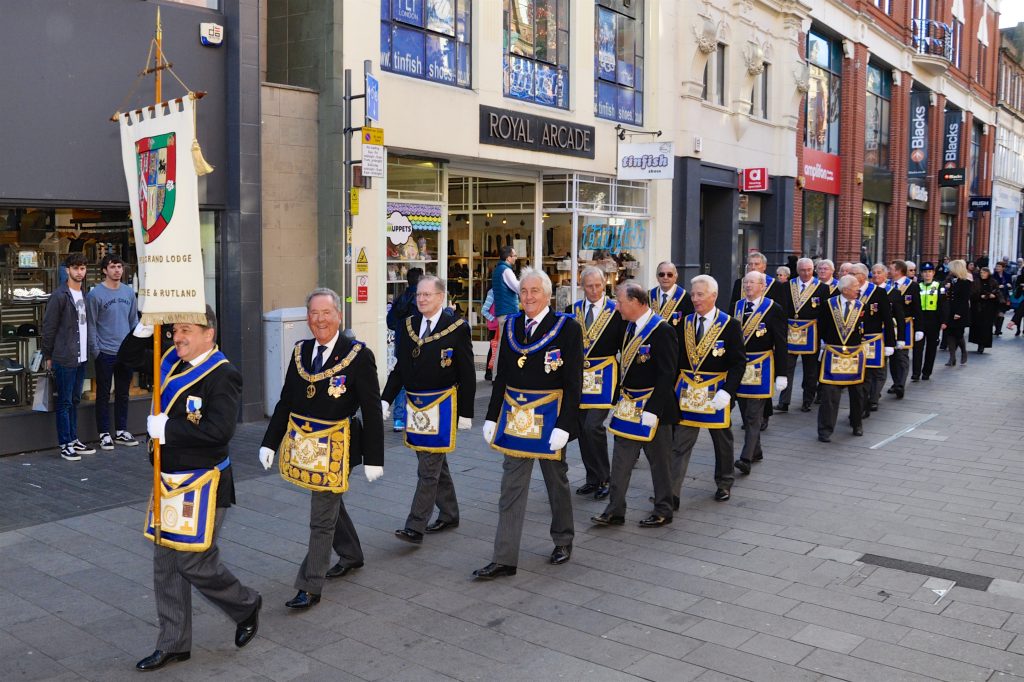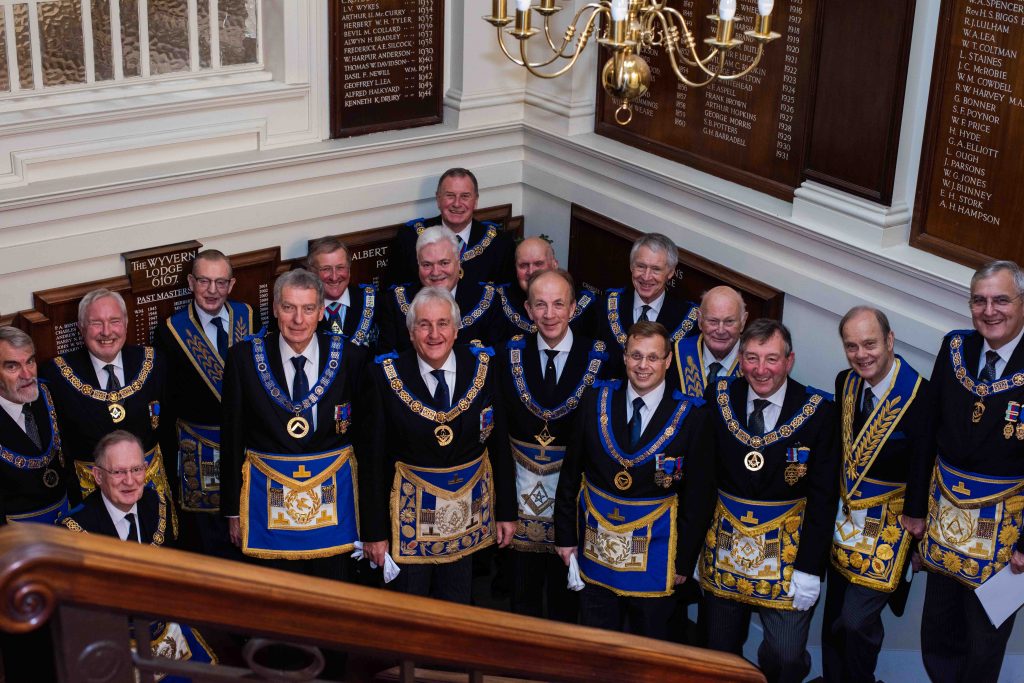Bringing the world’s oldest fraternity into the 21st century

With a history in Leicester dating back to 1790, Freemasonry, the world’s largest and oldest fraternity, is facing an existential threat posed by modernity. “It is challenging when you have been around for over 300 years. It is difficult to turn that ship as quickly as modern society is changing,” explains Richard Barnett who is a communications officer for the Provincial Grand Lodge of Leicestershire & Rutland. This sentiment is echoed by the Provincial Grand Master of Leicestershire and Rutland, Peter Kinder: “We do need to change and we should change because if we don’t, we’ll die. The membership will drop until there’s nobody left, and that’s why it’s so important that we do change.”
In facing this challenge, the fraternity is eager to point out its openness and how its role as a self-improvement society benefited its impressive alumni: “We’ve got nothing to hide. It’s not a secret society, it’s maybe a society with secrets,” remarks Peter who further elucidates: “The Duke of Kent and the Duke of Edinburgh, we’ve had George I, George VI, they were all Freemasons, they were Grand Masters in their time. If you look at America, I think it’s nineteen presidents of the United States that have been Freemasons. Winston Churchill was a Freemason, that’s a very good recommendation.”
Presidents and nobility are not all that can be found amongst its members: “It is open to anybody to join and we don’t question people’s profession. We do have to make sure people don’t have a criminal record,” explains Richard, adding: “so long as you fit the criteria that we have in terms of age being over eighteen.” This more down to earth aspect even extends to outer space: “There was a lodge that was formed on the moon. Buzz Aldrin, he was the second man on the moon. He was a Freemason and they consecrated a lodge when they went to the moon. It’s called Lunar Lodge #2000 and anybody can join. You don’t have to be an astronaut to join, anybody that has a vague interest in anything like that, regardless of whether you’ve got a profession or not you can join.”

Richard is also keen to dispel the myth that Freemasonry is for men only: “It’s men and women, there’s one Grand Lodge for England and Wales in London, there are two for women which have been around for hundreds of years and there is one as well for men and women to sit down together.” Also, on whether Leicester’s cultural diversity is reflected within its membership, Richard enthusiastically states: “100% yes, particularly in Leicester, because where we are in the country and our universities as well, so it’s not just the ethnic diversity of Leicester itself. The universities attract people from all over the world. We get people from every ethnic background.” Peter succinctly describes it as such: “It doesn’t matter whether it’s Buckingham Palace or whether it’s a terraced house in Highfields, at the end of the day.”
Freemasonry has often described itself as a system of morality veiled in allegory and illustrated by symbols. The symbols usually take the form of tools used by medieval builders and have a story attached to them that teach important life lessons for the betterment of its members and wider society. Peter explains the significance of one of their key symbols: “We have an ashlar which is a big square stone that they used for building cathedrals and churches in medieval times. When you join us, it is said you’re a rough stone if you like, and as you progress through Freemasonry, that stone is smoothed and prepared, ready to be put into the building.”
This building is the Biblical King Solomon’s Temple: “So that’s why we use the analogy of King Solomon’s Temple, the building of it. So instead of building a temple, we’re building a person, so we take that rough stone and then we work on it, which is where the Entered Apprentice name comes into it, so he does the basic stuff, which is trying to chip away and make it and then you get to the Fellow Craft where he does a little bit more then the Master Mason really finishes it off and makes it a smooth stone and it’s ready then to put into the building,” explains Peter, referring to the stages of becoming a Freemason.
Expanding upon the interplay of symbols and morality, Richard informs: “The four cornerstones of Freemasonry are integrity, friendship, charity and respect. All four of those do relate in different ways to different people. We have some people who look at Freemasonry in terms of charity. That’s what they want to do. They want to give something back to the local community and we’re a great vehicle to do that.” Notably, Leicestershire Freemasons donated £202,000 to local charities last year.
Richard cites friendship as a key factor for him joining Freemasonry: “One of the reasons I joined was to widen my circle of friends and to a person in Leicestershire and Rutland, you can count all 2,700 of them as friends and then if you want to extend that to the nation, we’ve got over 200,000 members and I don’t know every single one of them but they’re kind of a friend that you don’t know, so you suddenly have this wide circle of friends that you can meet.”
This camaraderie could not be achieved without integrity and respect: “That’s something that we like to teach. I don’t mean teach in a dictatorial way, I mean teach as in influence. So a lot of things … where we talk about the origins of Freemasonry, the integrity of a person to help others, when we all join Freemasonry, we’re all at different levels. We’ve got Kings, Dukes, refuse collectors, teachers, doctors, sales people. It doesn’t matter. Everybody joins on the level as we call it and the integrity and respect that we give each other is something which people see when they join.”
Historically, these values obtained a respectable reputation for Freemasons that they’d like to restore: “At one time going back before the Second World War, you saw parades of Freemasons in the streets in full regalia, going to lay a foundation stone into the town hall or the Civic Centre or the cathedral. That all stopped during the Second World War, because, like the Jewish fraternity, Freemasons were persecuted by Hitler. That’s when it all went underground… that’s where all that undercover cloak and dagger scenario came from and that’s what we’re trying to dispel now.” Peter adds.

Richard explains that Freemasonry’s change in direction and emphasis on openness is promoted by their chief executive officer, David Staples: “They want people to be proud of being a Freemason, we want people to say that they are, don’t hide away any membership, just through any fears that people might read some negativity, or read a Dan Brown novel or something like that. That’s not about us.”
Confident of achieving their goals, Peter laughingly shares a joke showcasing the fraternity’s previous disposition:
“There’s a saying that we have: How many Freemasons does it take to change a light bulb?
Change? Change?!
Yeah, we don’t do change.”



